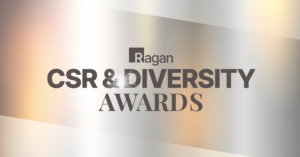Curating the week in wellness Sep. 20–Sep. 24, 2021: Eliminating burnout, finding the limits of free speech, and more
The week’s essential content and fresh industry pickings for those dedicated to employee well-being.

Greetings, wellness, HR and comms pros!
We hope you enjoy this week’s collection of thought-provoking articles, savvy tips and relevant takeaways.
As always, please get in touch with any ideas, suggestions or feedback on how we can serve you better or cover topics that are near and dear to your heart. We are grateful for all the excellent work you do.
1. How to halt burnout and keep your best workers happy.
According to Gallup’s most recent data, 48% of U.S. employees are actively searching for new gigs.
How can you change their minds and make them keen to stay? Gallup says that “burnout-free” employees have these things in common:
- They have managers who set healthy expectations and remove stress.
- They have high well-being and excellent work/life balance.
- They work in a culture that celebrates each person’s strengths.
The piece concludes:
“The year 2020—from its pandemic to its political and social turmoil—has made one thing clear: The organizations that win the talent, customers and profits of the future will be those that care for their employees best.”
2. Finding the limits of workplace free speech.
You want your people to feel free to speak their minds—but to what extent?
There are no clear answers, especially in our era of heated debate. However, the key is to establish protocols of how your company will respond beforecomplaints arise.
As HR Dive writes, the trick is to know what to do “when the ball’s hit to you.”
Tips include:
- Strive for due process, rather than jumping to conclusions when allegations unfold.
- Establish red lines of unacceptable speech and behaviors.
- Let the law be the guide—and keep on top of it.
- Prioritize training.
Regardless of how you intend to patrol and enforce free speech limits, be aware that a crackdown could result in damaged trust and morale—and even an employee exodus.
3. What constitutes a valid vaccine mandate exemption?
That’s the topic of this CBS News report, which notes that “individuals of faith or people with disabilities may still be exempt from getting jabbed.” But who qualifies? Companies should prepare for a boisterous, bumpy response to the White House’s sweeping new legislation.
For example, as CBS News reports: “Roughly 2,600 Los Angeles Police Department employees are claiming religious objections to the department’s COVID-19 vaccination requirement … And in Washington state, some 3,800 state workers have requested religious exemptions to Gov. Jay Inslee’s mandate that workers be fully vaccinated by Oct. 18 or lose their job.”
CBS News writes that “The employer generally has to go with the idea that the employee’s request is based on their sincerely held religious belief.” However, “if the employer has an objective basis for questioning its sincerity, the employer is justified to seek additional information.”
While religious claims may be subject to some “wiggle room” and scrutiny, “Requests for exemptions on disability grounds … tend to be more straightforward.” In other words, if an employee receives documentation from a doctor that the vaccine could be risky for their health, then there’s not much an employer can do to force the issue.
In any case, companies should brace for a flurry of exemption claims—and plan how to handle or investigate such requests.
4. Lessons on reporting CSR, DE&I, and ESG progress.
If you’re struggling to report on your company’s sustainability initiatives, employee support programs or philanthropic ventures, have a look at these heavy hitters’ recent reports:
- See how Fifth Third is helping employees learn and develop career skills.
- See how Cisco shares about its CSR efforts.
- Learn what Intel’s doing to honor Hispanic Heritage Month.
- Get takeaways from Truist’s DE&I efforts.
- Here’s how The University of Michigan is tracking its wellness initiatives.
5. Taking a more scientific, strategic approach to DE&I.
ADP’s chief diversity and talent officer, Bob Lockett, reveals steps organizations can take to make more lasting, effective changes to their DE&I framework. One idea: Use the scientific method to monitor and evaluate your progress.
Also:
- Leverage each hire’s unique strengths and create the right conditions for their success.
- Nurture underrated and unexpected stars.
- Be OK with allowing the data to prove or disprove your hypothesis, if you’re open to that.
- Make the most of demographic data.
6. An alternative framework for employee wellness programs.
Harvard and MIT have collaborated to concoct a “Work/Design for Health” framework, which: “offers new and viable directions for improving worker health and well-being while maintaining or enhancing employee engagement and productivity.” According to researchers, “It elucidates why employers should shift their focus from offering wellness programs, which aim to change individual behaviors, to creating workplace conditions that ease burdens and support employee health and well-being.”
Interested in learning more? You can access the employer toolkit here.
7. Become a workplace mental-health ally.
As EHS Today reports, SHRM is now offering a certificate program that was “launched to both eliminate the stigma of mental health in the workplace and foster an organizational culture where workplace mental health can be discussed openly, helping organizations build a more complete approach to employee wellness.”
8. Evolving your benefits for a changing world and workforce.
EBN offers six strategies to consider, including:
- Heighten focus on mental health support.
- Incorporate resources to navigate care.
- Offer flexible, personalized options.
- Expand well-being resources.
- Maintain the telehealth expansion.
- Renew emphasis on community.
Get more ideas on expanding benefits here.







